Discretes
Table of Contents
Resistors

Resistors are components that limit current based on the resistance R and voltage V. The relation between resistance, voltage and current is set in Ohm’s law, R=U/I. Resistors contain a colour code to depict their resistance value. Below you will find a figure that helps you determine the resistance of resistors with a 3 or 4 band code.
Resistors included in this kit
- 10R
- 100R
- 330R
- 1k
- 10k
- 100k
- 1M
- 10M
Potentiometers

Potentiometers (also known as potmeters or pots) are resistors that vary their resistance when you turn their knob. A classic potentiometer has three pins, two of them connected to the two ends of a resistive trace, and a wiper pin that rides on that resistive trace. By turning the knob, the wiper changes position on the resistive trace, which changes the resistance between the wiper pins and the outer pins.
A visual is provided which explains the abovementioned story for a 60Kohm potentiometer connected to 5V.
A potentiometer can be used as a 2 pin variable resistor by ignoring one of the outer pins or shorting the wiper pin with one of the outer pins. In this case it may be wise to put a resistor in series, as this setup may produce a short when turning the knob such that the resistance becomes very low.
Potentiometers included in the kit
- 1k
- 10k
- 100k
Capacitors
A capacitor is a passive electrical component that is able to store energy in an electric field, similar to a battery but they are able to release the charge (Q) much faster. The amount of energy it is able to store is measured in Farads (F). Grossly simplified: it blocks DC and is able to pass AC, making it a common component in filters. Your kit contains two common types of capacitors: Ceramic and Electrolytic.
Ceramic Capacitors

A ceramic capacitor is built from one or multiple layers of metal, separated by a dielectric, in this case ceramic. Ceramic capacitors are non-polarized and traditionally lower in capacity than electrolytic capacitors.
Ceramic capacitors included in this kit
- 100pF
- 1nF
- 10nF
- 100nF
- 1uF
Electrolytic Capacitors
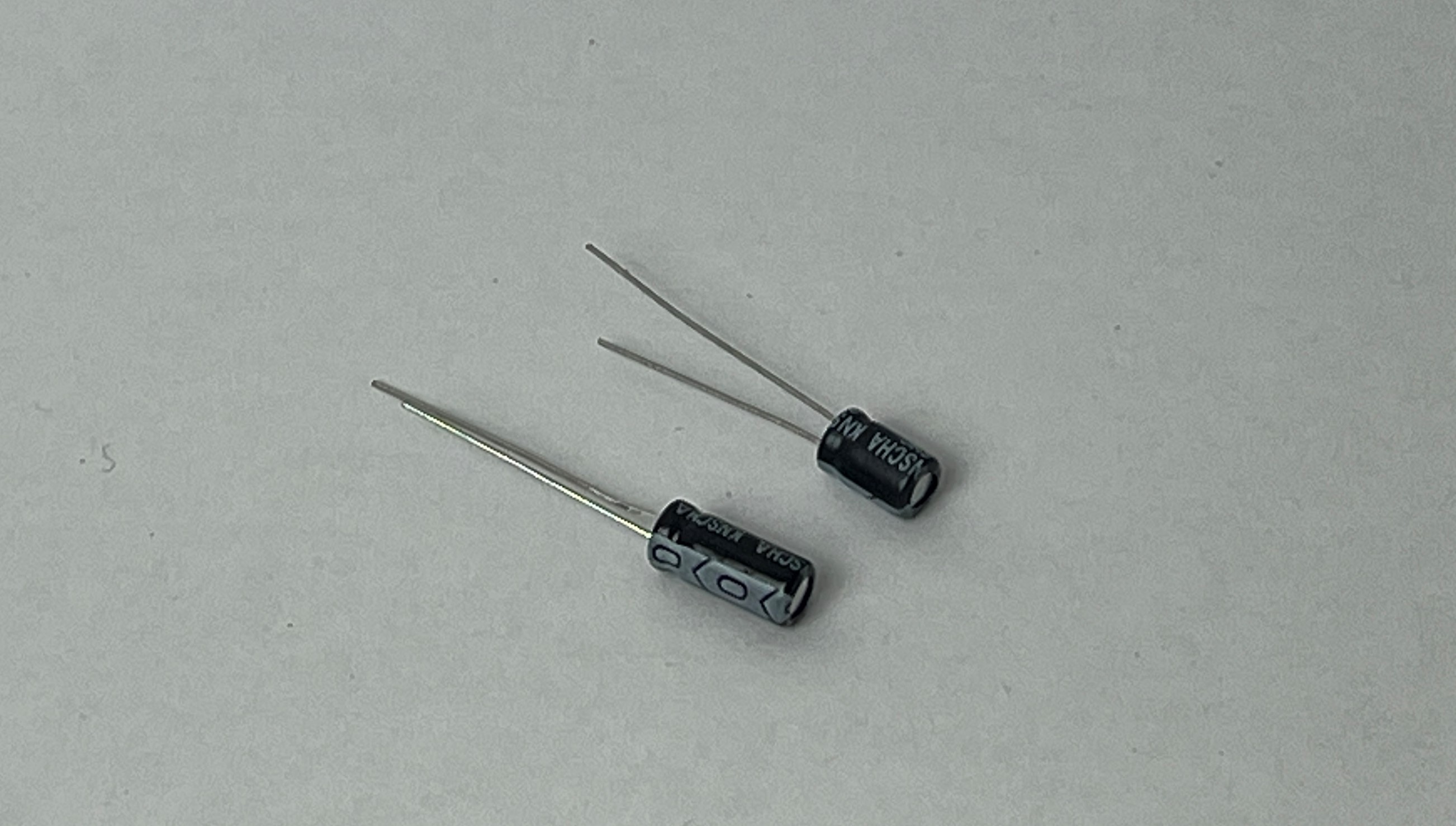
An electrolytic capacitor is built from one or multiple layers of rolled up metal, separated by a dielectric. Electrolytic capacitors are polarized and have a stripe on the side of the negative lead.
Electrolytic capacitors included in this kit
- 10uF
- 100uF
Inductors
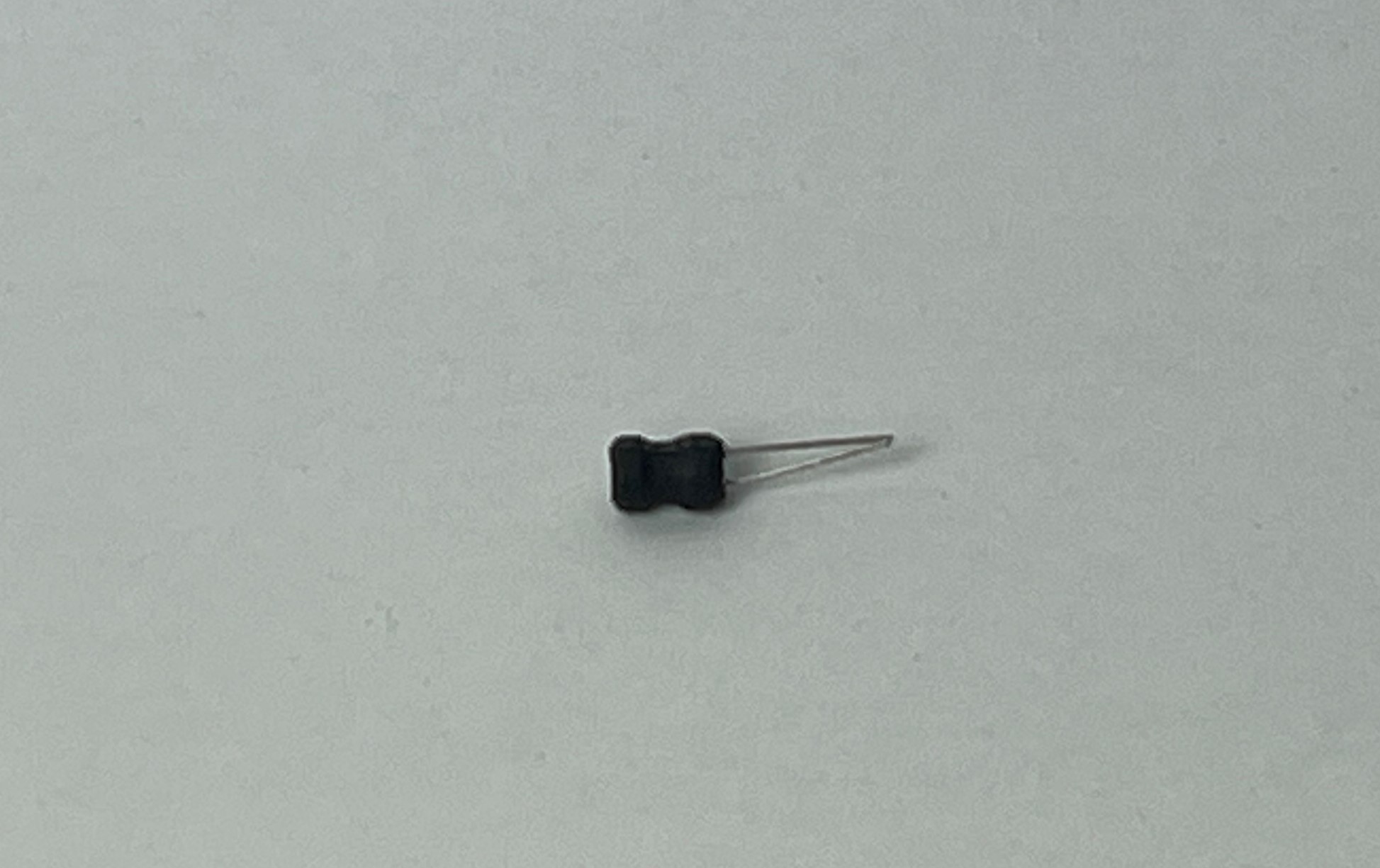
An inductor is a passive electrical component that is able to store energy in a magnetic field. The amount of energy it is able to store is measured in Inductance (L). Grossly simplified: it resists changes in current and acts as a short when the electric field is maximized. An inductor is built from one or multiple turns of copper wire, most often wound around a metal core. Inductors are non-polarized.
Inductors included in this kit
- 10uH
- 100uH
- 1mH
Diodes
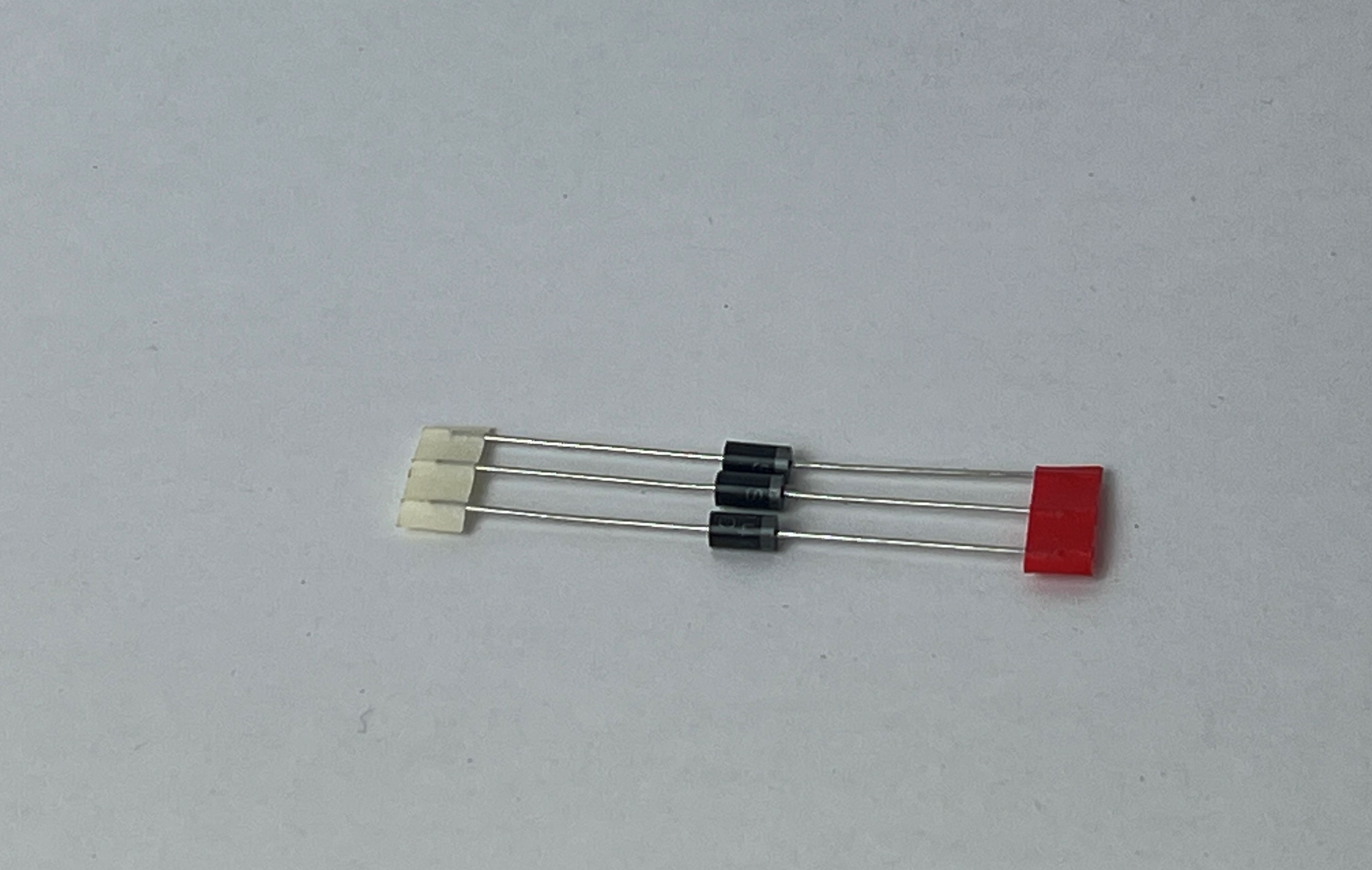
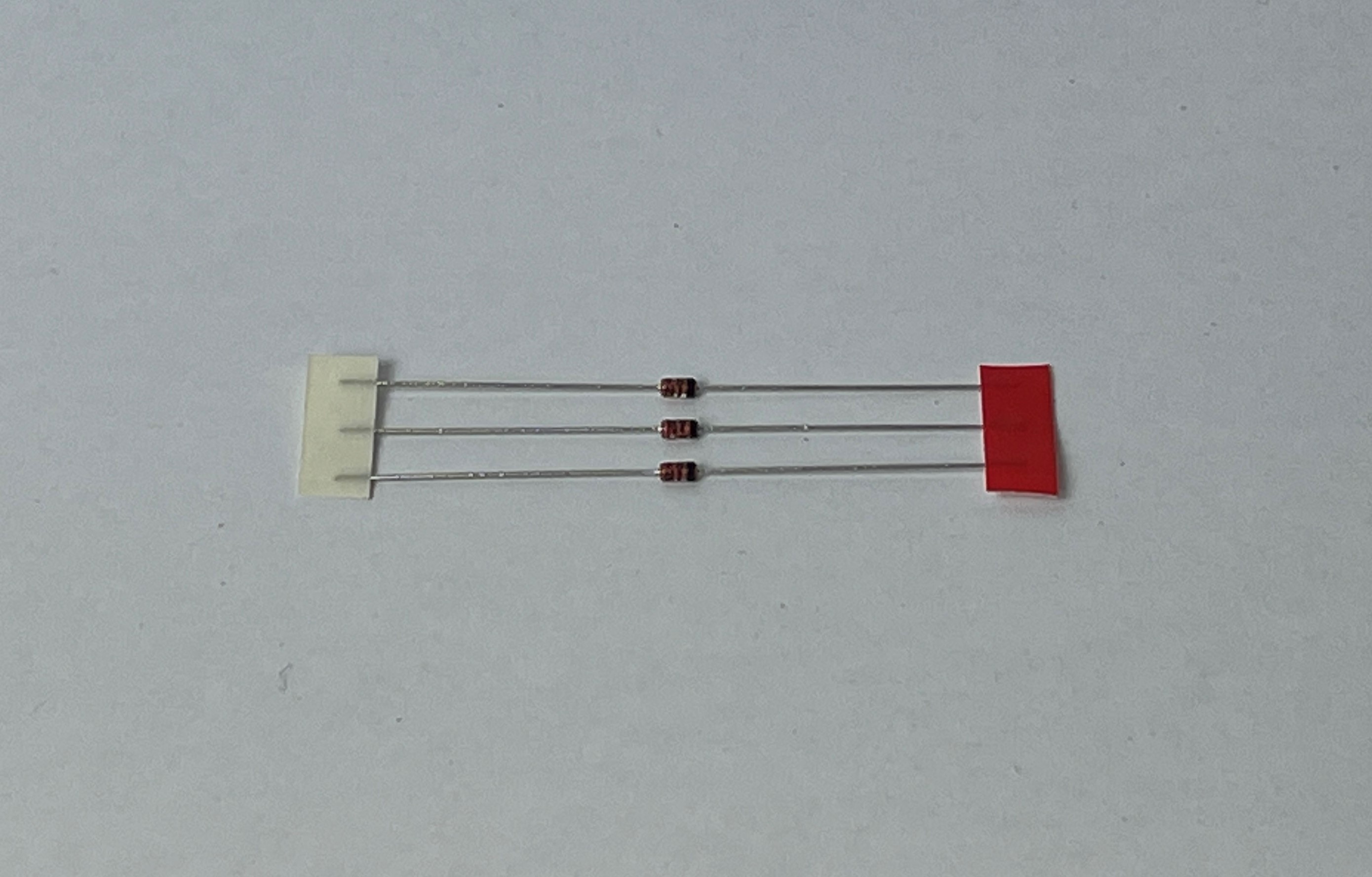
Diodes are passive devices that allow current to flow one way, but not the other. The current flows from anode to cathode, where the cathode is indicated by a stripe on the component. Diodes produce a voltage drop of around 0.6V and a given maximum current. The IV (voltage-current) curves, forward voltage and maximum current are all stated in the datasheet.
In your kit you will find three types of diodes:
- SR240
- 1N4148
- 1N4001
Datasheet SR240 Datasheet 1N4148 Datasheet 1N4001
LEDs

LEDs are diodes that emit light when current passes through them. They work like diodes, with similar IV curves and general behaviour. LEDs do however feature a higher forward voltage, which varies with LED type and colour. A safe maximum current for these LEDs is 15mA and the forward voltage can be measured with a multimeter. A resistor is needed to limit the current through the LED like shown in the example schematic provided below.
Transistors
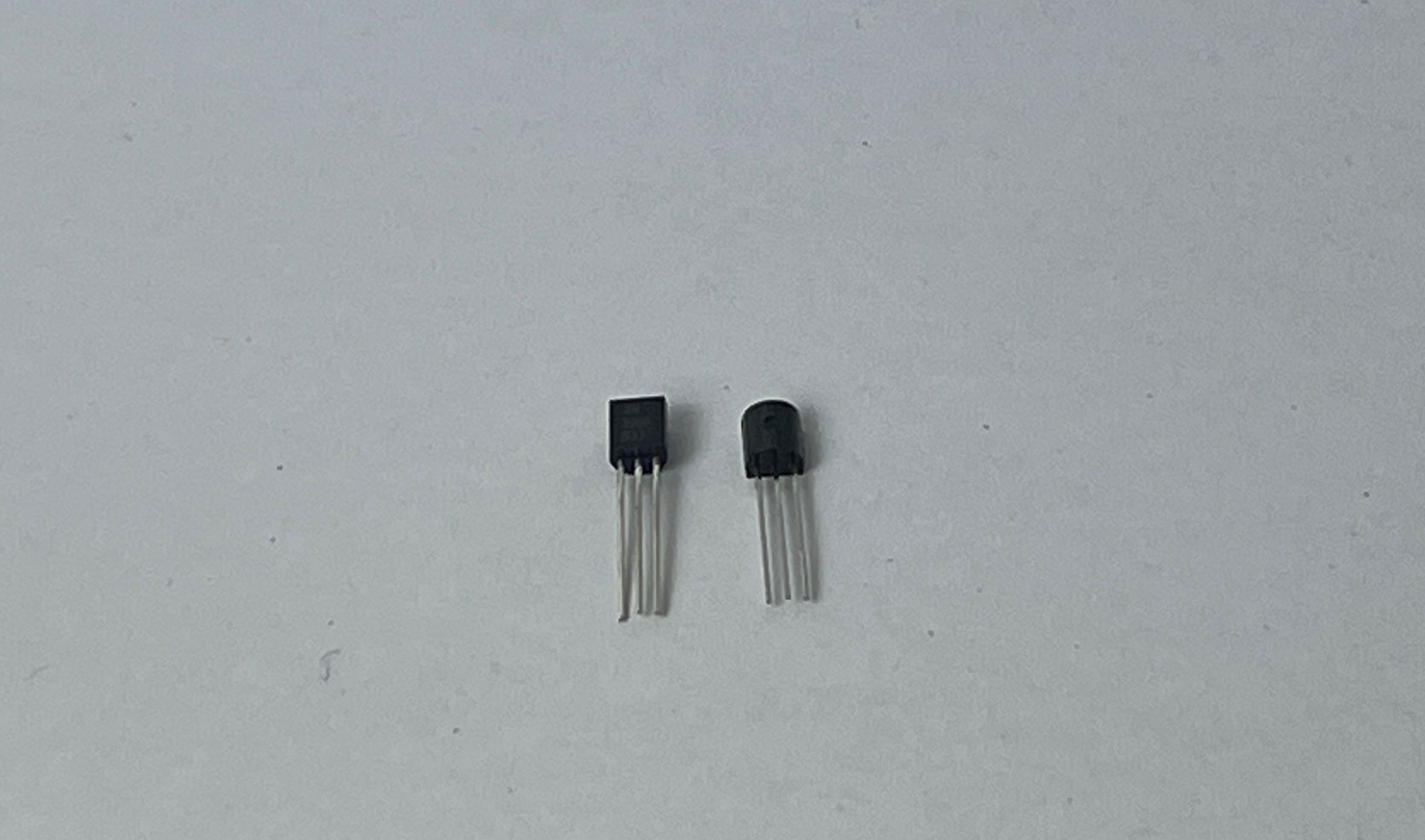
A transistor is a passive current amplifying component. You will learn how a transistor works and how to use it during your courses.
Your kit includes three types of transistors:
- 2N3904
- 2N3906
- BS170